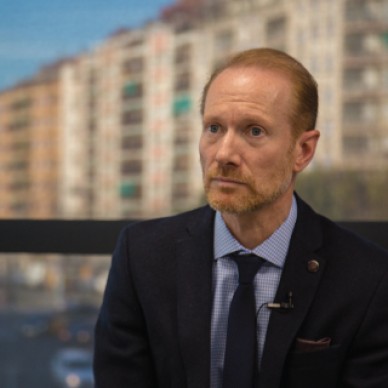
Mark Saunders Participates in a Panel Discussion on the Role of Digital Twins in the New Normal of Construction
Categories

With a special focus on human behavior in public spaces, a panel of experts -consisting of Bentley Systems representatives and members of Zigurat faculty board- discussed the long-term effect of the pandemic experience and the uses on Bentley Systems Legion Simulator in a discussion panel held by BIMCommunity. BIMCommunity, Zigurat’s online platform that covers the latest news of the construction sector and connects thousands of BIM professionals, hosted a roundtable discussion where Mark Saunders, the director of Master’s in Global Smart City Management program sat down with Dr. Richard J. Vestner, Senior Director Digital Solutions, and Eduardo Lazzarotto, Director of Product Management from Bentley Systems to map the challenges and developments of the post-pandemic cityscape. Ignasi Perez Arnal, Founder and CEO of the BIM Academy and Professor at the Zigurat Global Institute of Technology, moderated the video panel. During the video discussion, some examples of how the Bentley Systems Legion Simulator can come in handy for predicting people’s movement in a building or public environment. Eduardo Lazzarotto used the example of Transport for London (TfL) who has been using Bentley’s simulation systems for many years already to improve the operation of the assets over time. According to him, by using simulation and by using the latest technology, the service provider has managed to future-proof many stations and improve the quality of the journey of the passengers and the output. Now, this same simulator that was developed observing and recording people’s behavior in stations, airports, stadiums, etc., can be used for extra insight and intelligence on planning the post-pandemic safety measures in public spaces. TfL, who is currently digitizing its infrastructure, plans on using digital twins to keep simulating the operation, the maintenance, and the whole life cycle of their assets moving forward. The idea is to make the most out of a piece of infrastructure that is going to cost quite a lot of money and keep improving throughout its life cycle over the next couple of decades. On a bigger scale, a digital representation of a city or subsystem that would allow the stakeholders to understand, compare, and predict its performance, states Dr. Richard J. Vestner. In a city context, digital twins could be used to run different what-if scenarios like natural disasters, terrorist attacks, or a pandemic. When running as a simulation, it could lead to valuable and latest insights without disturbing or damaging real life and with comparatively low costs. Mark Saunders adds that, in a way, digital twins, by permitting testing a scenario or a plan before acting on it, leads to finding the optimal environmental solution as well. All in all, many aspects of cities, infrastructure, and citizens' behavior were discussed, as well as the opportunities to turn the current situation into transformational development. Watch the panel discussion in BIMCommunity:Check out the video


